Lia Dondini Taddei – Fonderia di campane Marinelli
Over the centuries, bells have had a public, civic and religious function, transmitting messages and acquiring a symbolic value.
The bells were and still are used also in magical rituals to drive away malevolent spirits and ward off storms or to attract Angels.
In addition to marking the passage of time and constituting a liturgical reminder, they have always performed the function of communicating situations of imminent danger, joys, sorrows and griefs to the people. Used in the religious rituals of the West and the East, with their sound, sweet and powerful at the same time, they attract men to themselves and mark a sacred bond between Man and the Divine.
In Italy there are few bell foundries left but it is in Agnone, a small village in Upper Molise, also known as the “town of bells”, that the voice of the Angels was born. In fact, here is the oldest foundry in Italy, the Pontifical Marinelli Foundry, where the secrets and techniques of this ancient craft are handed down from father to son. A tradition that has lasted for over 1000 years, today carried on by the brothers Armando and Pasquale Marinelli.
In this ancient family foundry bells and bronze sculptures are made by hand using the “lost wax” technique already known by medieval and Renaissance founders.
The bells are therefore not made in series but each piece is handcrafted on commission by churches, governments, businesses and organizations and its bells can be found all over the world. Many of the bells made by the foundry are found in the Vatican.
The foundry also obtained the right and the honor, conferred on it by Pope Pius XI in 1924, to portray itself with the Papal Coat of Arms.
Making a bell is a true work of art and its creation is an experience of considerable emotional impact. The material used is bronze, an alloy of copper and tin which in the case of the artistic works of the Marinelli foundry is of the purest quality. The entire process ranges from three months for the smallest bells up to one year for the more complex ones.
It starts with the construction of a shape consisting of the Soul, which corresponds to the inside of the bell and is made of bricks, leaving the hollow internal part and a hole in the upper part and is covered with a first layer of clay; proceed with the False bell, i.e. the core is covered with further layers of special clay, until a smooth surface is obtained which will have exactly the desired thickness for the bell and on which the waxes with dedicatory inscriptions, images and the artistic friezes; and finally the Mantle that is pierced by applying other layers of clay to the desired thickness on the false bell.
The form thus completed is heated with the “lost wax” technique or the fire is lit inside the core to ensure that the wax melts with the heat, leaving the artistic composition imprinted in the negative inside the mantle.
At this point the cloak is lifted, the false bell is destroyed and placed back on the soul.
The model is now buried in the casting ditch where the melting takes place at around 1150 ° C. The liquefied bronze is poured into the individual forms, filling the free space created between the Soul and the Mantle.
The merger is a process that cannot afford the slightest mistake on pain of the bad outcome of the work; it always has an almost mystical and delicate component and as such it generates apprehension and should be blessed. Often this is done in the presence of a priest who accompanies the culmination of this productive phase with litanies and prayers.
Only after several times can the shapes be broken to see the result. The metal must cool little by little and without sudden changes in temperature. By cooling it down, the “voice” of the bell can change.
But the bell isn’t over yet. As soon as it is freed of its casing, it must be cleaned: the bas-reliefs must be cleaned with steel brushes and then with a chisel and file.
It is a long and patient work entrusted to the expert hands of master craftsmen. The interior must eventually be covered and the clapper must be attached to it. To ascertain that the bell is perfectly functional and not cracked, experts are called to check the tone level of the bell with a tuning fork.
Visiting the foundry is a unique experience.
Le campane hanno avuto nei secoli un funzione pubblica, civica e religiosa, trasmettendo messaggi e acquisendo un valore simbolico.
Le campane venivano e vengono tutt’ora usate anche nei rituali magici per scacciare gli spiriti malevoli e allontanare i temporali o per attirare gli Angeli.
Oltre a scandire il trascorrere del tempo e costituire un richiamo liturgico, svolgono da sempre la funzione di comunicare al popolo situazioni di pericolo imminente, gioie, dolori e lutti. Utilizzate nei rituali religiosi di Occidente e Oriente, con il loro suono, dolce e potente allo stesso tempo, attirano a sé gli uomini e segnano un sacro legame fra l’Uomo e il Divino.
In Italia sono poche le fonderie di campane rimaste ma è ad Agnone, piccolo borgo dell’Alto Molise, conosciuto anche come il “paese delle campane”, che nasce la voce degli Angeli.
Qui infatti si trova la più antica fonderia in Italia, la Pontificia Fonderia Marinelli, dove i segreti e le tecniche di questo antichissimo mestiere vengono tramandati da padre in figlio. Una tradizione che perdura da oltre 1000 anni, oggi portata avanti dai fratelli Armando e Pasquale Marinelli.
In questa antica fonderia di famiglia si realizzano campane e sculture bronzee a mano utilizzando la tecnica della “cera persa” già conosciuta dai fonditori medievali e rinascimentali.
Le campane quindi non sono fatte in serie ma ogni pezzo viene realizzato a mano su commissione da chiese, governi, imprese e organizzazioni e le sue campane si possono trovare in tutto il mondo. Molte delle campane realizzate dalla fonderia si trovano in Vaticano. La fonderia ha anche ottenuto il diritto e l’onore, conferitole da Papa Pio XI nel 1924, di effigiarsi dello Stemma Pontificio.
Fabbricare una campana è una vera opera d’arte e la sua realizzazione è una esperienza di notevole impatto emotivo.
Il materiale utilizzato è il bronzo, una lega di rame e stagno che nel caso delle opere artistiche della fonderia Marinelli è di qualità purissima. Per l’intero processo si va dai tre mesi per le campane più piccole fino a un anno per quelle più complesse.
Si parte dalla costruzione di una forma costituita dall’Anima, che corrisponde all’interno della campana e viene realizzata in mattoni, lasciando la parte interna cava e un foro nella parte alta e viene ricoperta da un primo strato argilla; si procede con la Falsa campana, ovvero l’anima viene ricoperta con ulteriori strati di argilla speciale, sino ad ottenere una superficie levigata che avrà esattamente lo spessore voluto per la campana e sulla quale vengono applicate le cere con le iscrizioni dedicatorie, le immagini ed i fregi artistici; e infine il Mantello che si fora applicando sulla falsa campana altri strati di argilla sino allo spessore desiderato.
La forma così completata si riscalda con la tecnica della “cera persa” ovvero viene acceso il fuoco all’interno dell’anima per far sì che la cera si sciolga col calore lasciando impressa in negativo, all’interno del mantello, la composizione artistica.
A questo punto si solleva il mantello, si distrugge la falsa campana e lo si ricolloca sull’anima.
Il modello è ora interrato nel fosso di colata dove avviene la fusione a circa 1150°C. Il bronzo liquefatto viene versato nelle singole forme riempendo lo spazio libero creatosi tra l’Anima e il Mantello.
La fusione è un processo che non può permettersi il minimo errore pena la cattiva riuscita del lavoro; ha sempre una componente quasi mistica e delicata e come tale genera apprensione e va benedetta. Spesso questo viene fatto alla presenza di un sacerdote che accompagna con litanie e preghiere il culmine di tale fase produttiva.
Solo dopo svariato tempo si potranno rompere le forme per vedere il risultato. Il metallo deve raffreddare poco a poco e senza sbalzi di temperatura. Dal suo raffreddamento può cambiare la “voce” della campana.
Ma la campana non è ancora terminata. Appena liberata del suo involucro, deve essere pulita: i bassorilievi vanno puliti con spazzole d’acciaio e poi a colpi di scalpello e di lima.
Si tratta di un lungo e paziente lavoro affidato alle mani esperte di maestri artigiani. L’interno deve alla fine essere riguardato e vi si deve attaccare il battaglio.
Per constatare inoltre che la campana sia perfettamente funzionante e non incrinata, vengono convocati degli esperti che con un diapason verificano il livello di tonalità della campana. Visitare la fonderia è un’esperienza unica.



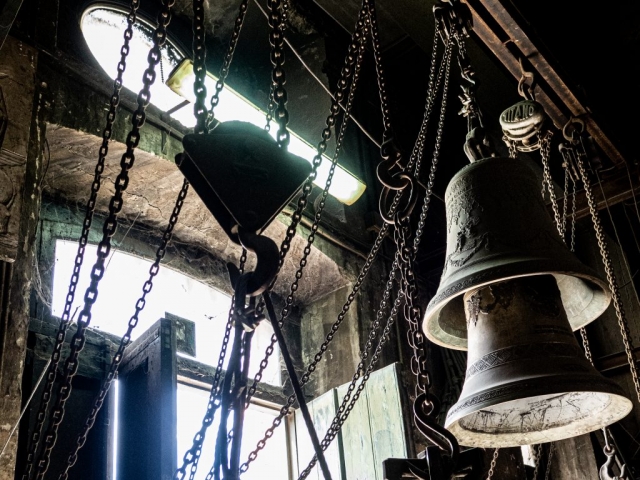
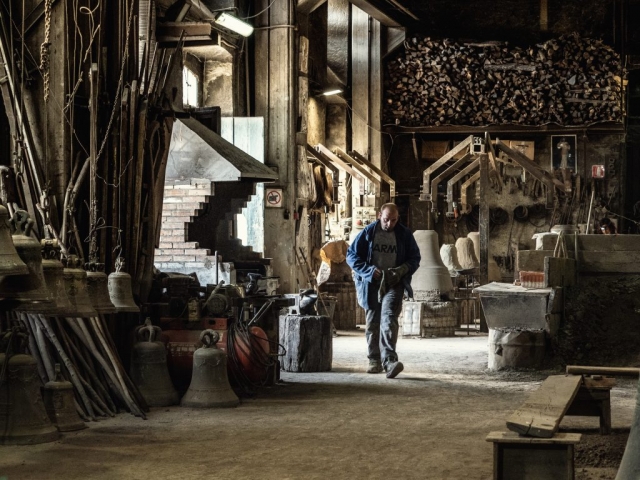
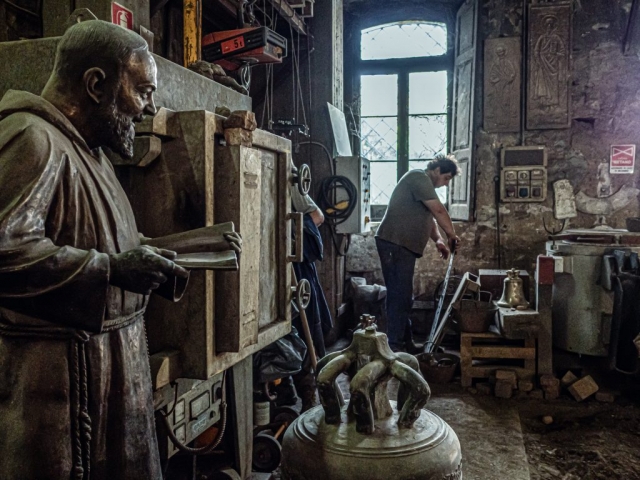
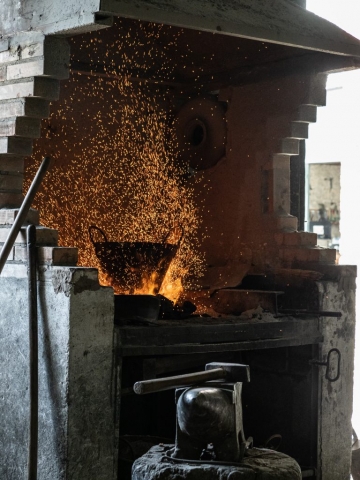
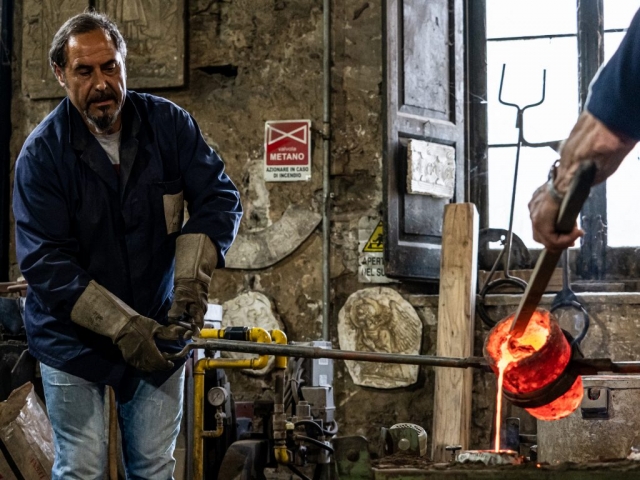
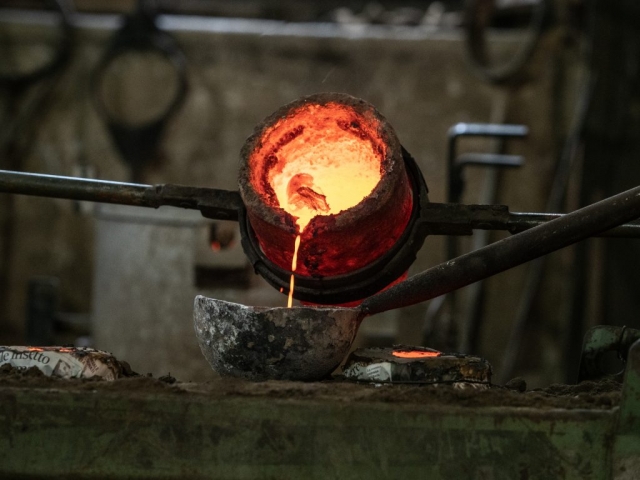
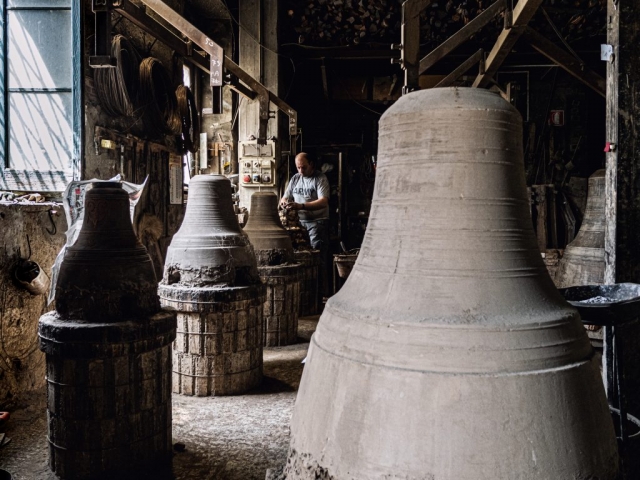
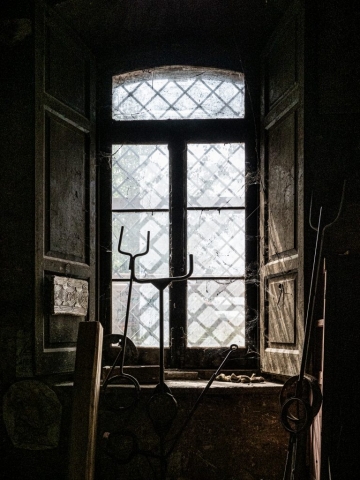
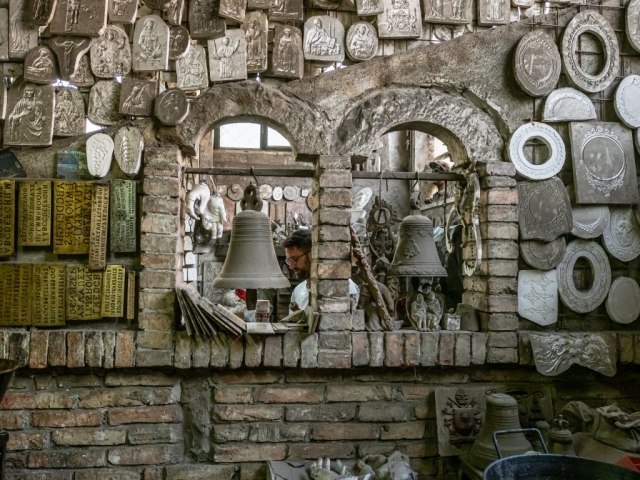
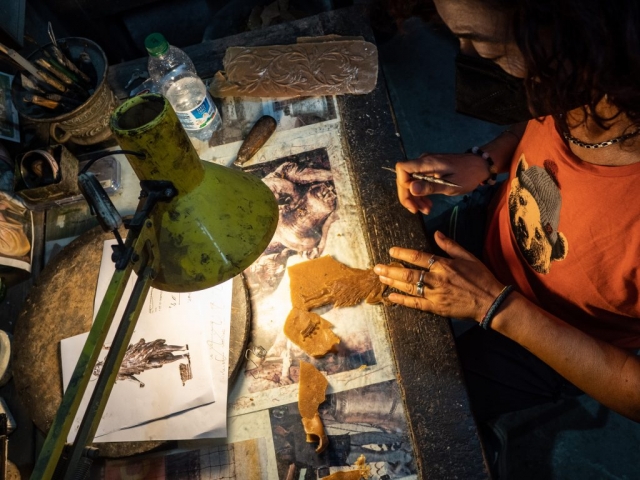
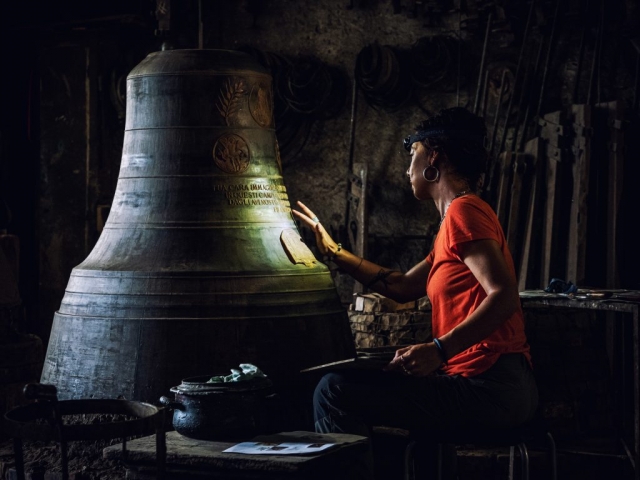
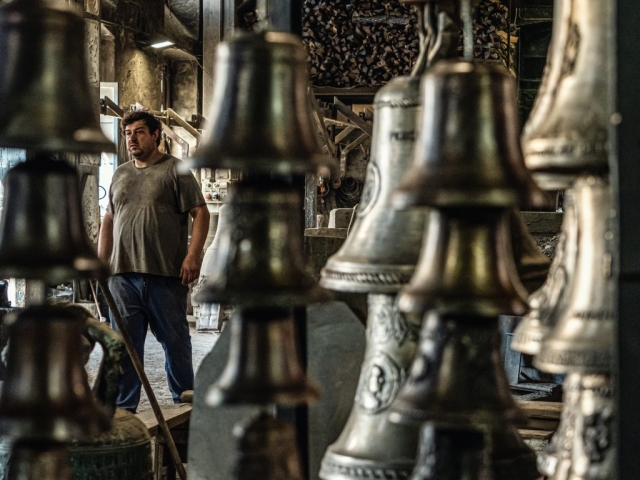
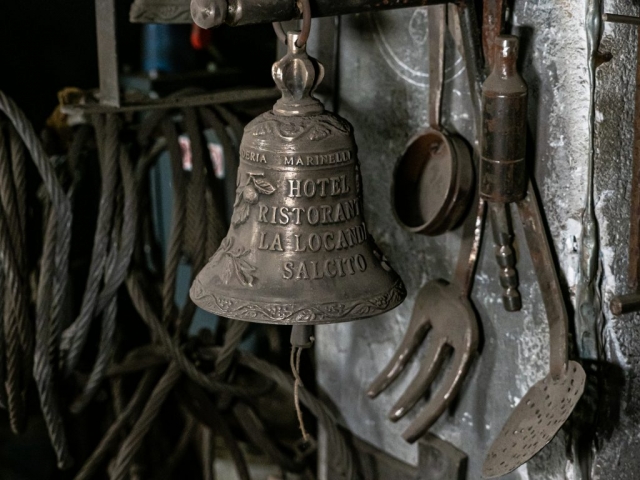
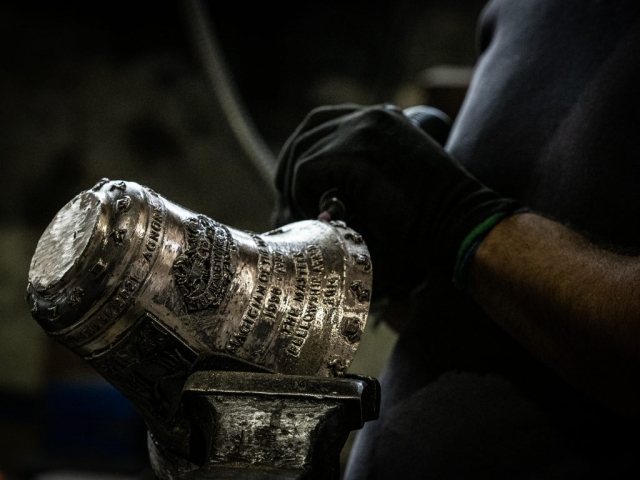
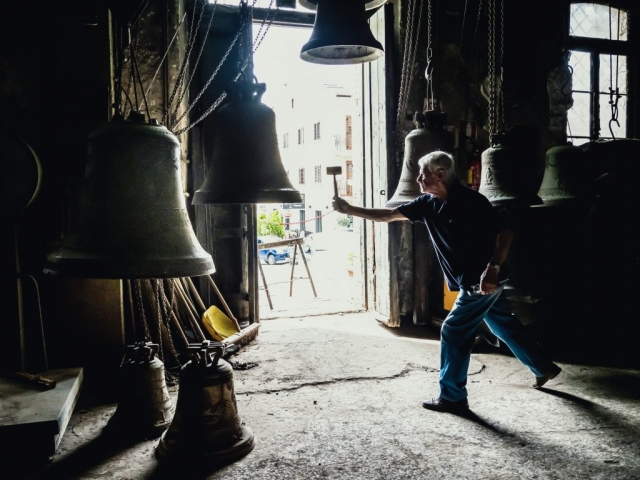
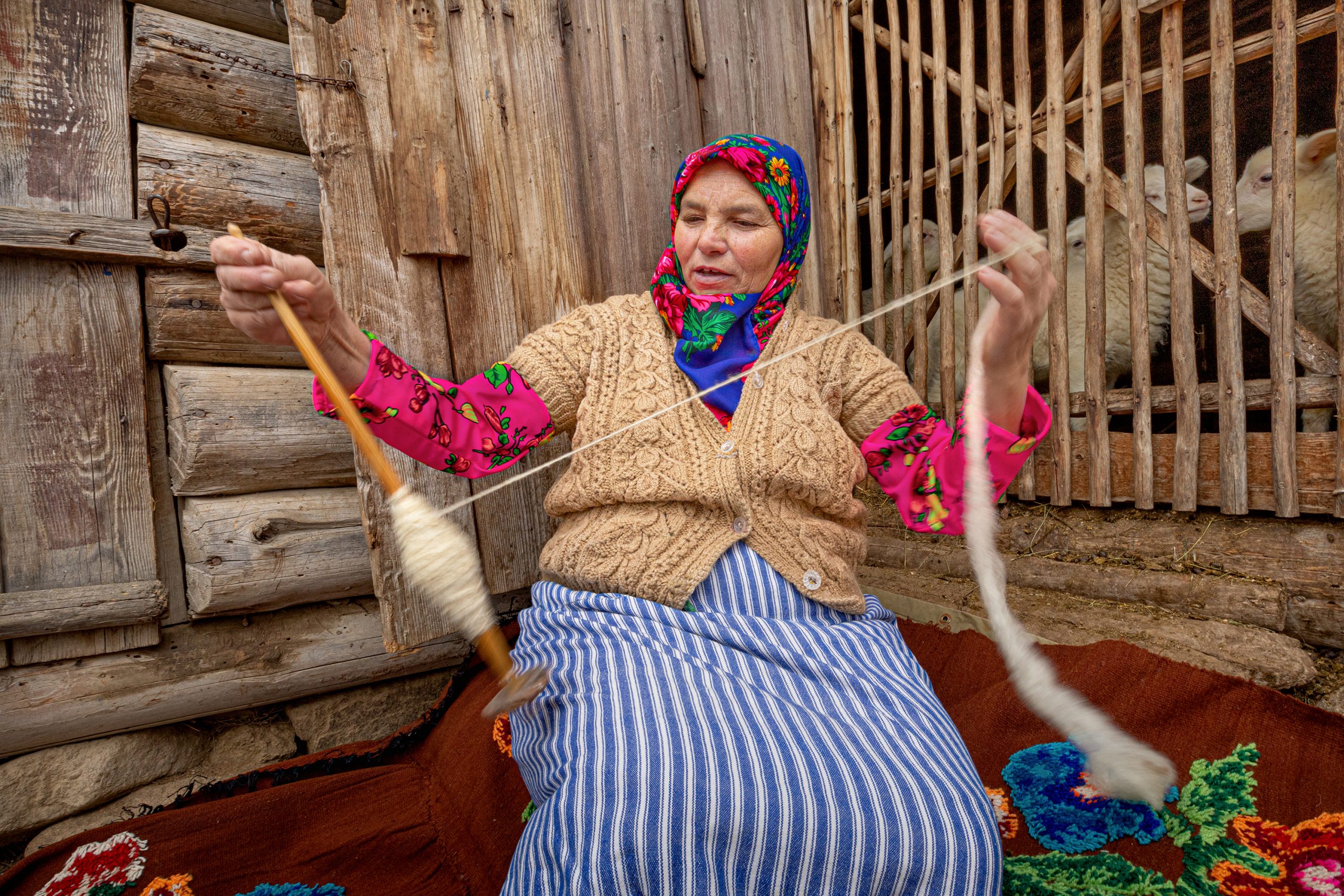
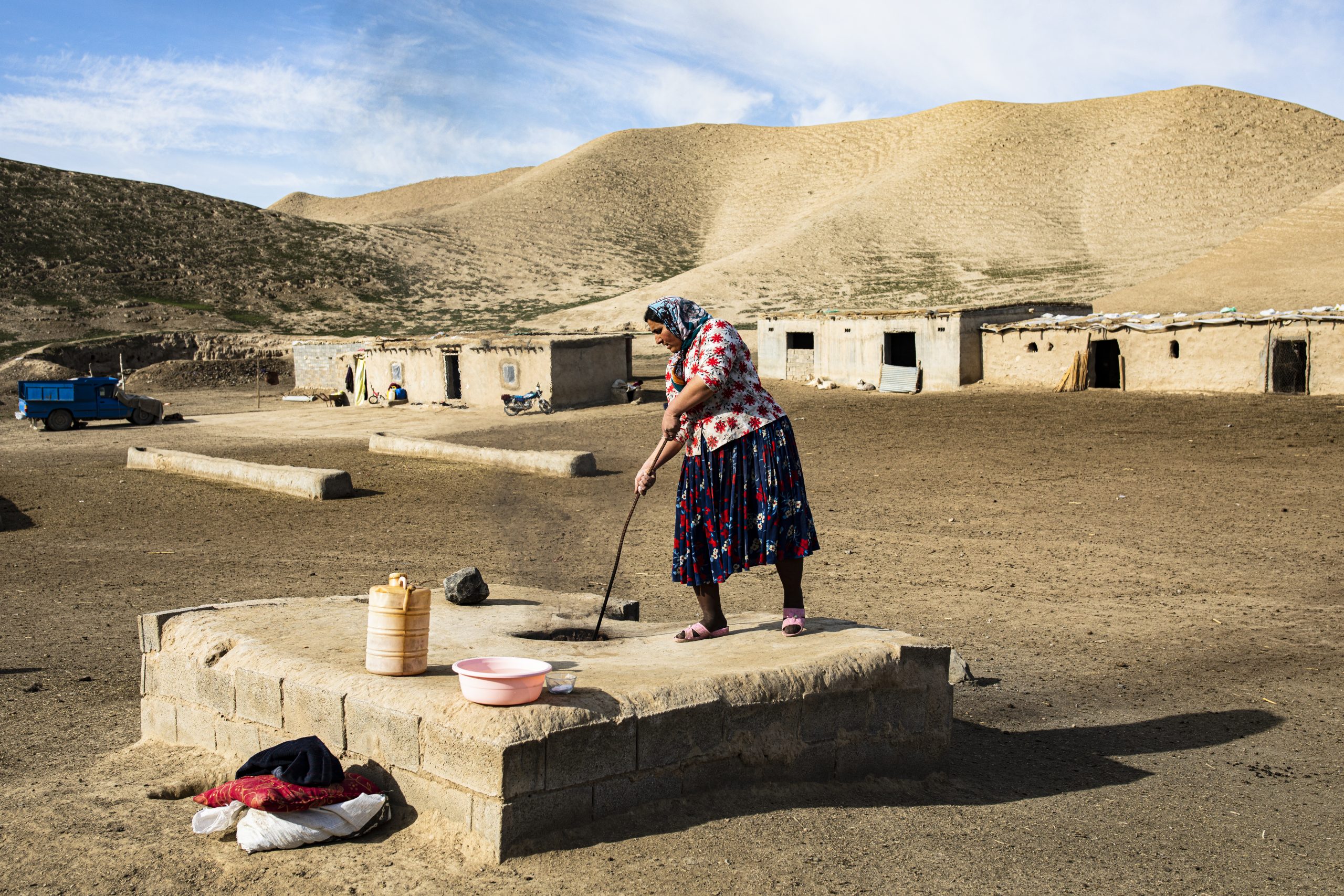


TTA 2022. Lia Dondini Taddei. Fonderia di campane Marinelli e Pasqua ortodossa Maramures
[…] Vai alla storia completa su traveltalesaward […]